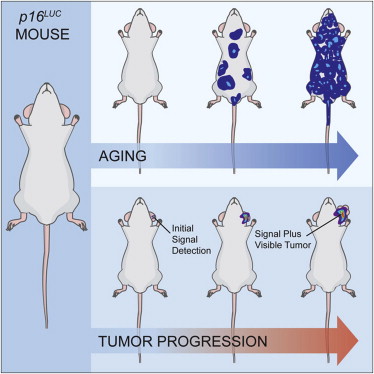Ned Sharpless and colleagues have developed a mouse model that makes it possible to visualize tumor growth by means of a “knocked-in” p16 gene linked to a luciferase reporter.

This work is described in a paper in the January 17, 2013, issue of Cell. Ned was interviewed about the study on “The State of Things” on WUNC.
Abstract:
“Monitoring cancer and aging in vivo remains experimentally challenging. Here, we describe a luciferase knockin mouse (p16(LUC)), which faithfully reports expression of p16(INK4a), a tumor suppressor and aging biomarker. Lifelong assessment of luminescence in p16(+/LUC) micerevealed an exponential increase with aging, which was highly variable in a cohort of contemporaneously housed, syngeneic mice. Expression of p16(INK4a) with aging did not predict cancer development, suggesting that the accumulation of senescent cells is not a principal determinant of cancer-related death. In 14 of 14 tested tumor models, expression of p16(LUC) was focally activated by early neoplastic events, enabling visualization of tumors with sensitivity exceeding other imaging modalities. Activation of p16(INK4a) was noted in the emerging neoplasm and surrounding stromal cells. This work suggests that p16(INK4a) activation is a characteristic of all emerging cancers, making the p16(LUC) allele a sensitive, unbiased reporter of neoplastic transformation.”
Highlights from the article: “Activation of cellular senescence with aging does not predict cancer mortality ► p16LUC detects emerging tumors in 14 genetically distinct tumor models ► p16LUC provides a detection advantage over other in vivo cancer monitoring systems ► Both the tumor and stroma of emerging neoplasms express high levels ofp16INK4a”
